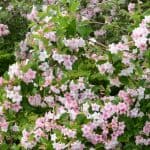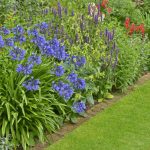Last updated on March 3rd, 2022
Our site is reader supported, this means we may earn a small commission from Amazon and other affiliates when you buy through links on our site.
As a beginner, growing a garden can seem very overwhelming and the last thing you want to do is invest your time and money only to find out that you made some critical mistakes in your first few months. That is why this list will give you the top 12 garden tips to help you make the correct choices with your gardening endeavours so that you can enjoy the fruits of your labour, both figuratively and literally depending on what you grow.
1.Start small
When you start gardening, it’s very exciting. You visit the nursery in spring and you see so many wonderful options, beautiful flowers already in bloom indicative of the perfect tropical or sweet cottage garden that you could achieve. But when you first start out, you need to start small.
You want to plant just a few of your favourites and then add more variety to your garden over time. If you try to add every plant you’ve ever seen and loved, every herb you’ve ever cooked with and every flower you’ve ever cut into floral arrangements, you will quickly get overwhelmed. Plant a small garden and get accustomed to how the plants grow in your area, especially if it’s a new area. Figure out what your plants need, and in particular what weeds you have to contend with, what animals might be fighting for your plants, and what pests will try to destroy them. If everything goes well in your first season, then you can expand, maybe repeat all of the things you grew during the first season and add to your garden.
2. Site Selection
You will need to figure out which part of your garden you’re going to use for your garden, and which areas might be a patio or decked out if that is something you are also thinking about. Where you plan on spending time, where you get a lot of sunlight, etc. A common mistake made by newcomers is to misjudge sunlight. You need to pay attention to how the sunlight moves through your garden all day during the spring and summer before you choose a plant. If things need a minimum of 6 hours of sunlight in order to thrive and you pick an area that gets sunlight in the morning but you failed to check during the day because you were working, you might find out the hard way that that particular area only get sunlight until about 10 in the morning. So follow the sunlight throughout the day before you decide where you’re going to plant.
Keep in mind the arrangement you want. If you are growing plants in containers around your patio to create a privacy screen that is colourful and gives off an attractive scent, think about the containers and support structures you will also need. Some plants prefer morning sun while others prefer shade or full sun and this is why its so important to know how much sun you get and where.
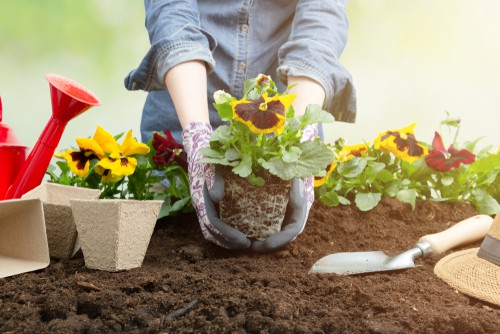
3. Plant Selection
When you prepare your garden you need to decide which plants you want to have. Obviously, it’s important to have things that meet your exact needs are. A climbing plant will be better for areas where you have a pergola that you want to be covered whereas evergreen shrubs are perfect for building a hedge and year-round flowers can be achieved with a mixture of different plants. However, you also need to select plants that match the conditions you have. If you have a primarily sunny location in your garden you will need plants that prefer full sunlight.
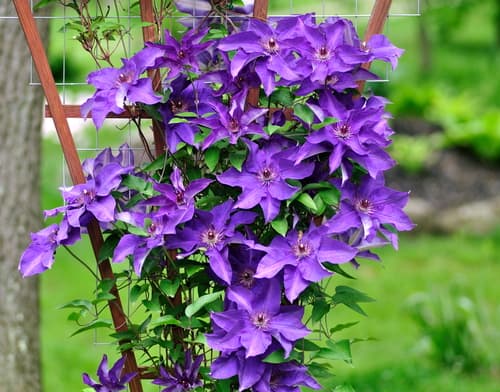
If you have a completely covered patio by comparison that only gets sunlight in the morning for 6 hours, you will need to find things that thrive in the shade or partial sun. If you live in a warmer climate you will need something that is heat tolerant. Make sure you pick varieties that thrive not only where you live but in the space that you have. Don’t pick a climbing Hydrangea if you have limited space in your garden for it to grow and don’t pick a full-sized evergreen plant when a dwarf variety would fit much more effectively in the containers you plan to use.
4. Containers
If your space is limited it doesn’t mean you can’t enjoy having flowers in your garden, and you could consider using pots and planters instead. Containers will allow you to grow many plants in a single pot, creating a combination of flowers, shrubs, herbs and even vegetables. When you grow in a container you want to make sure that the size of the containers is big enough for the plant when it is fully established and that you select a potting mix to fill the pot rather than simply digging up the soil in your garden and adding it to the containers.
When growing in pots and planters, you can choose to purchase containers or build them yourself out of any materials you have around your garden. However, be aware of the plants you choose, specifically picking those that will thrive successfully inside containers, for example, dwarf varieties will probably fit better. Also, pay attention to what you are putting in the same plant container. If you are mixing multiple items in one container be sure that they are friendly and will complement one another and not fight one another for nutrients and water.
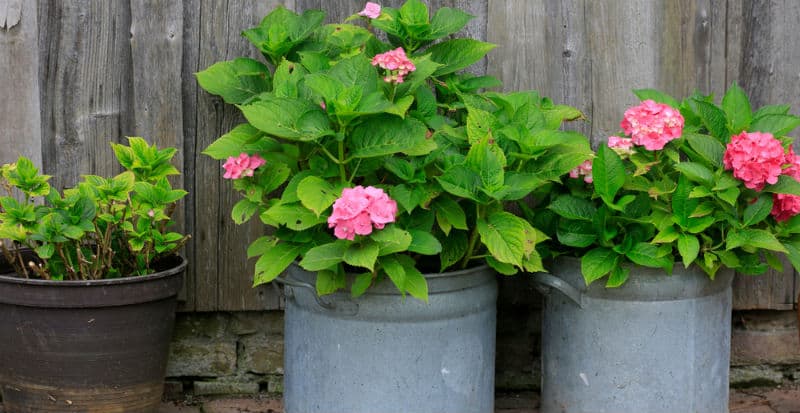
5. Spacing
Many people try to put as many plants as they can in a given area and they forget to consider the size plant when it is fully established. If you buy plants from a nursery they might be rather compact, maybe only 12cm tall but that doesn’t mean that they will stay that size. As different plants grow they can increase in height and spread exponentially. Many evergreen shrubs, for example, can reach a spread of 2 metres wide and 2-3 metres tall. Vining, climbing plants can reach up to 10m tall if not properly tended to.
If you place your plants too close together and you don’t accommodate for spacing, it might not be an issue the first few weeks and as your plants grow they will choke each other out, compete for resources, have stunted growth and decreased air circulation that leaves them more susceptible to fungal infections such as powdery mildew.
6. Frost
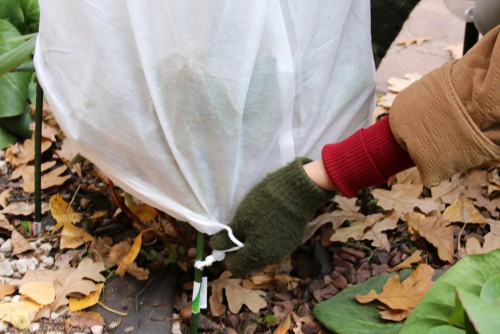
You need to think about where you live and what your weather is like. If the weather in your region is susceptible to a hard prolonged frost, you need to know when that starts and when the risk is over so that you can plant and prune accordingly. If you plant your flowers or plants too early in the spring and then a cold snap sets in it can kill them off, especially if they’re younger and smaller. If they are older it can still blow away things like flowers so there won’t be anything for pollinators to access, which means no flowers and in some cases subsequently no fruit. You need to know when the spring frost date is for your region so that you can put your plants out after that time has passed. In most parts of the UK tender plants can usually be planted out at the end of May onwards.
Incidentally, you also want to know when your late-season cold snaps set in so that you can move your plants inside or harvest, or otherwise overwinter your plants before it’s too late. Different plants will produce flowers on different growths, at different times of the year, and this means if you don’t adhere to the frost dates in your area you might leave your plants outside just one day too long and find that they are now damaged and you get no flowers the following spring. Some of the more tender but hardy plants will need protecting with fleece and mulch placing around the base.
7. Pests
Be ready for pests. Don’t fall victim to the mindset that you can just plant your garden full of flowers or vegetables, and walk away. There will be pests no matter what you plant and you will need to do something about those pests if you want all your hard work to mean something.
Before you dive in and start maintaining your garden read up on which organic measures you can use to control pests in your area. Figure out what plants you want to cultivate and what their common pest problems are. Study companion plants. Worst case scenario you might have to start picking off bugs from your plants by hand.
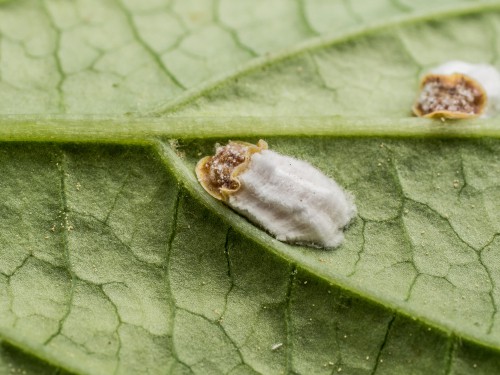
No matter what you are planting you can always find a good companion plant and integrate organic measures first to get rid of your pest problems and then insecticide too. The reason you want to know what your options are is that in some cases, perhaps right before your plants are flowering, you won’t be able to use harsh insecticides because they can kill off the pollinators who are also frequent in your plants and doing their jobs.
8. Test your soil pH
Healthy soil will produce healthy plants. You can’t just move to a new location, grab some flowers or vegetables at your local nursery or garden centre and then pop them into the ground. The soil is the most important part of your plant house so it’s important that you figure out what amendments (if any) need to be made to your soil before you get started. You might not be able to dive into your gardening endeavours the minute you want to because there’s a lot of homework to be done in order to do things the right way, however, in the long term if you plan on growing regularly you will be grateful that you did the homework beforehand. With regards to soil, you need to figure out what soil you have and how to amend it as necessary.
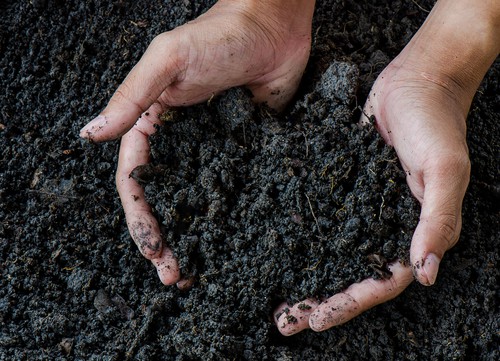
There are pH test kits (and other test kits) that you can order online and use to test the soil. These are things you’ll have to use regularly year after year just to make sure that the soil is healthy and adequate. If you are growing in pots you won’t need to test unless you are digging up soil from your garden, but it is advised that you don’t do this because growing in pots requires specialised potting composts and garden soil is not suitable. If you are growing in raised beds, it might be more affordable to use the soil you have but will need to add things to it, such as compost, growmore, well-rotted manure, fish blood and bone, and bonemeal.
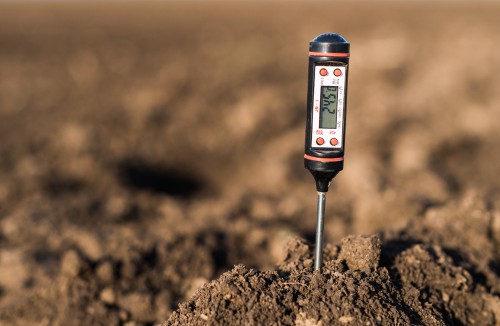
Once you get the soil at a healthy level you won’t have to change that much about it year after year.
Additionally, if you are planning on planting flowers, fruit or vegetables that require a specific level of pH, for example, Pieris, you will need to test the pH and make amendments thereafter to get it to a neutral, acidic or alkaline state depending on your requirements. For more diverse gardens you may need to section off an area of your garden specifically for highly acidic shrubs and then another section for alkaline plants. It all depends on what it is you want.
9. Mulch around the base of plants
Tangentially you want to use mulch. The biggest frustration you will face in your garden is weeds and plants drying out, both of which mulch can help with. Unless you are fully retired and plan to spend every day outside plucking the weeds as they grow, you will need to mulch.
You can certainly weed on a daily basis but there’s no need when you can add mulch to the top of your soil. This will help to choke out weeds and incidentally is beneficial for many of the flowers and plants you grow too. Adding mulch helps to keep the soil cool and retain moisture, which will be beneficial during the summer months. It is best to add approximately 6-9cm of mulch depth around each plant. This naturally blocks out the sun that would otherwise reach weeds and keeps moisture from evaporating. You don’t have to buy mulch from the store. You can always put down things like pine straw, shredded leaves or other natural materials.
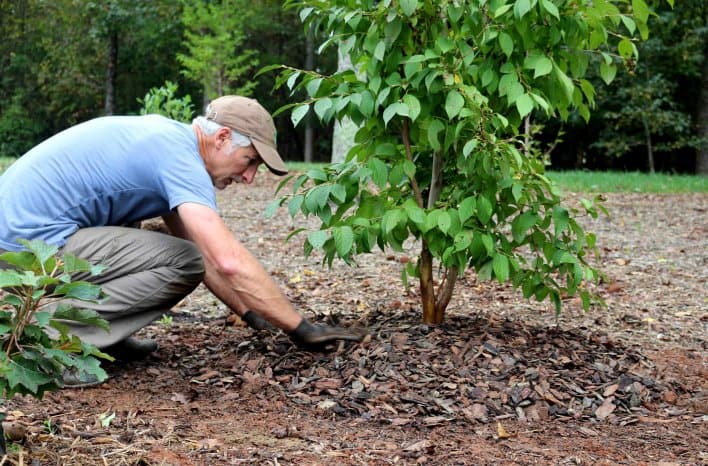
10. Food
Starting with great soil is important and adding mulch is equally beneficial, but just like you need food and water regularly, so do your plants. If you want to really boost the quality of the nutrition provided for your plants’ long term you need to feed them regularly. The reason you want to keep track of where you are growing different items and what items you are growing is so that you can monitor what type of fertilisers they each use. For example, if you are growing vegetables in one area of your garden and flowers in another, they might require different feeding schedules and very specific fertilisation mixes. A month or so after you’ve planted you should start feeding your garden and then continue throughout the growing or blooming season for the plants in question.
Doing this regularly is imperative to the success of your plants simply because they will quickly leech out the nutrients that you have in your soil, even if you planted them in premium soil and you have added with every possible item mentioned in this article. Your plants are going to use up those nutrients and when they’re gone, they’re gone. So you can add them back into the soil with proper fertiliser.
11. Water all young plants, even if it rains
Water is equally important to the health of your soil. If you water too frequently it can cause diseases like root rot and this will prevent your plants from growing. Most plants need to be watered deeply at least once a week so, if you notice that rain isn’t forecast, and it’s particularly dry, checking on the soil and adding water is necessary.
When you do water, be sure to do it early in the morning or in the evening, so that you can minimise the amount of water that’s lost to evaporation and avoid scorching foliage. It will cost you much more than it needs to if you try to water in the middle of the afternoon, only to have half of your water evaporate before it’s been absorbed by the roots.
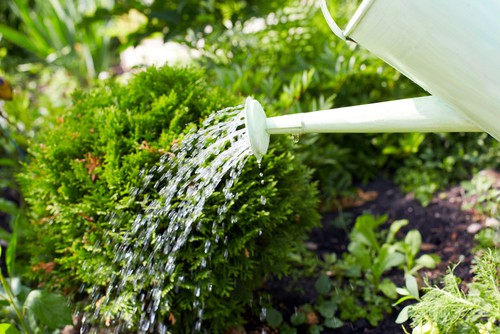
When you are watering avoid watering overhead and directly onto all of the leaves and flowers, especially if they are exposed to sunlight because this can cause them to burn, as we have just mentioned. You want to water directly at the base. You may need to water young plants daily and remember they only have limited roots when they are young from which to get water.
Check out some of our recommended hose pipes here.
12. Keep a Journal
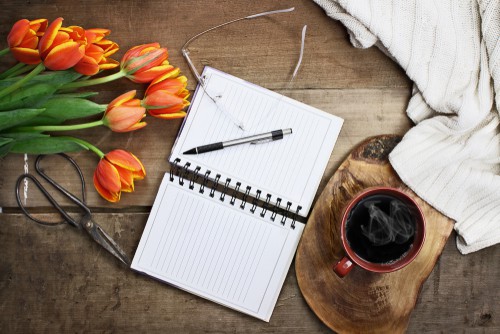
If you plan to do this more than one year in a row you will greatly appreciate the fact that you kept a journal. Don’t rely on your memory when it comes to figuring out what you planted where in previous years. With a journal you can, not only write down what you planted at which time of year, but you can keep track of what pests you faced and then draw a quick sketch of your garden so that you are able to properly rotate your crops.
More importantly, having this list will help you to determine which food items did really well in your garden and which didn’t. This might help you to narrow down the list of flowers and foods that you grow so that you can cultivate things that will give you the biggest bang for your buck.
Similarly, you also want to label every plant that you grow. Sometimes seeds are very slow to germinate and it will be very helpful for you to label the varieties you have so that you can keep track of which things did well and which things didn’t do so well. Knowing which varieties of flowers grew to specific sizes, which varieties outgrew the space provided, which did not do well in the shaded area of your garden, etc can all help you to reassess the layout you use years down the line.
By following all of these top 12 tips you can enjoy great success in your garden year after year!

